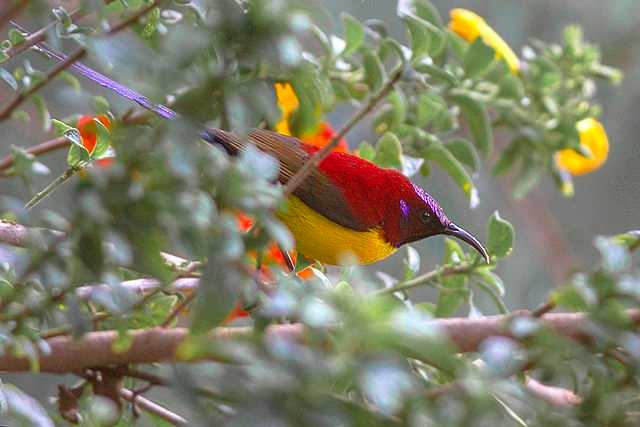Kanchenjunga National Park
Label : Day Trip
Tags : National Park
Permits & Other Charges : The entry to the Khangchendzonga National Park is restricted and regulated. An inner-line permit needs to be obtained by the Indian Nationals and a restricted area permit by the foreign Nationals, issued by the Ministry of Home Affairs.
Read more on Restricted Area Pemit
A permit also needs to be taken from the Chief Wildlife Warden, Government of Sikkim in accordance with the Wildlife (Protection) Act, 1972. He grants permission to visit the National Park for the purpose of tourism, photography, scientific research and studying wildlife for a fee.
The following permit fees are applicable :
Indian Nationals: INR 300 per head for the first seven days. INR 40 for additional days.
Foreign Nationals: INR 560 per head for the first seven days. INR 80 for additional days.
Students: INR 80 per head for the first seven days. INR 20 for additional days.
Tent charges: INR 50 per day
Guide Charges: INR 10 per day
Photography Charges: Still Camera: INR 30 Video Camera: INR 1000 Movie Camera: INR 35000
Khangchendzonga National Park
Kanchenjunga National Park, West Sikkim Overview
Named after the third highest mountain peak in the world, and nestled in the lap of the mighty Himalayas in North of Sikkim is the Kanchenjunga National Park. Included recently in UNESCO's world heritage sites, it is a rare high altitude national park and the first "Mixed-Heritage" site of the country. Also spelt as Khangchendzonga National Park, at an elevation of 8586 meters, it lies partly in Nepal and partly in Sikkim. Unique in biodiversity, this place is a paradise for trekking with a diverse landscape and breathtaking views.
The park, situated in the beautiful state of Sikkim, is sprawled across a vast area of 850 sq km and is home to most endemic and rare species of flora and fauna including the Snow Leopard and Himalayan Tahr. With the varying elevation of 1,829 m to over 8,550 m, the Kanchenjunga National Park adjoins Qomolangma National Nature Preserve in Tibet and Kanchenjunga Conservation Area in Nepal. There are numerous glaciers inside the national park with the Zemu glacier being the most significant one with an extravagant length of twenty-six kilometres.
Kanchenjunga National Park Highlights
1. Kanchenjunga Base Camp Trek

Read More on Kanchenjunga National Park
Flora and Fauna

Source
Khangchendzonga National Park Trek
Yuksom - Tshoka - Dzongri
Bakim - Dzongri - Thangshing - Samuteng - Goechala
Dzongri Base Camp - Rathong - Khangerteng
Thangshing - Lam Pokhari - Kasturi
Orar - Labdang - Tashiding.
Lucanes Jakchen-Yabuk-Rest Camp (Marco Polo Camp) - Green Lake
Lachen-Thasngu (4,174 m) - Muguthang (4,900 m) - Thay La (5,200 m) - Khyoksa La (5,500 m) - Rest Camp - Green Lake.
Permission of the State Cheif Wildlife Warden is also a must before visiting the national park. Almost all the treks pass through the Kanchenjunga National Park.
_20190406125626.jpg)
Source
History of Khangchendzonga National Park
_on_morning_20190406130036.jpg)
Source
Surprisingly, Kanchenjunga National Park also holds religious significance. In Buddhism, Sikkim is presented as a sacred land and according to some scriptures, the area of the park is originally the sanctum sanctorum where the Buddhist masters had hidden the religious treaties and texts to be later discovered by the people. According to the officials, these hidden treasures are called "ters", destined to be discovered by "ter-tons" which literally means treasure revealers. This has ensured that the sacred places littered the park are not defiled, helping in sustained preservation.
Best Time to Visit
Accommodation at Kanchenjunga National Park
Tips
2. Avoid the use of firewood or kindling any kind of fire in the forest areas.
3. You are not allowed to play loud music or use loudspeakers.
4. Do not swim in the lakes and rivers located inside the national park and protected areas.
How To Reach Kanchenjunga National Park
Jalpaiguri, 221 kilometres away is the nearest railway station. The national park is well connected from Jalpaiguri via roads and you may book a taxi.
The park is also well connected to major cities and is accessible through roads through NH-31A via Gangtok-Sevlok Road. You'll find state and private buses to the national park at regular intervals.